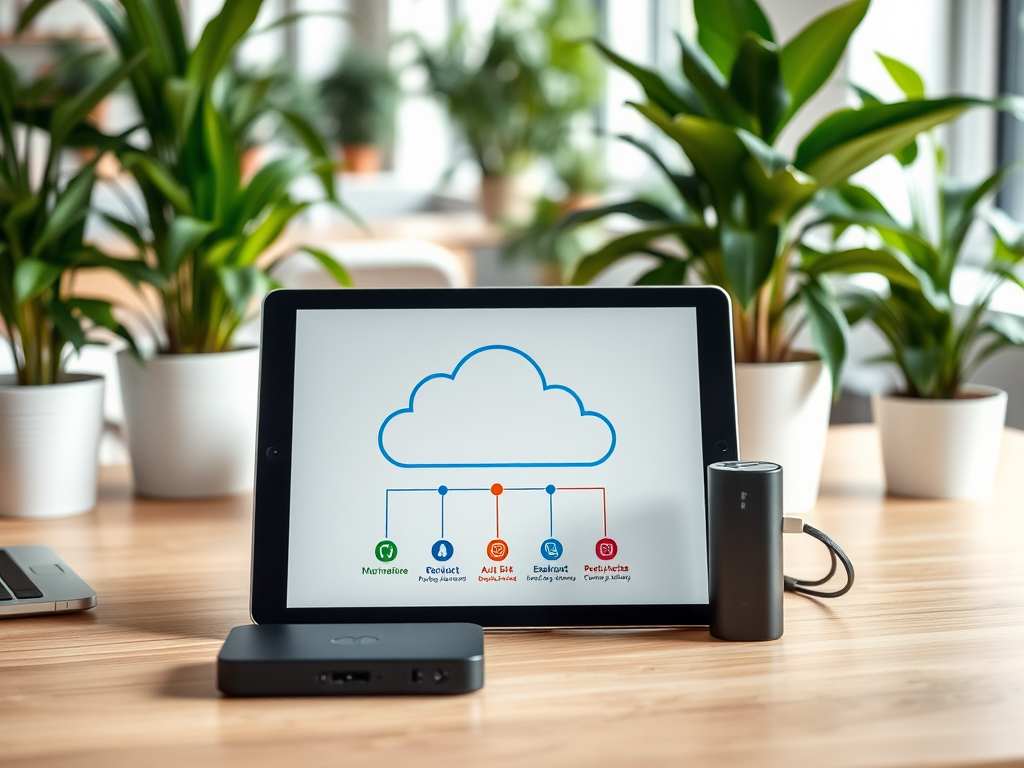In today’s digitized world, where personal devices carry a wealth of information and memories, the prospect of data loss can feel overwhelming. Every day, countless individuals encounter scenarios where their cherished data becomes unexpectedly inaccessible. From accidental deletions to catastrophic hardware failures, the threats to our digital lives are more prevalent than ever. Thus, understanding the profound implications of data loss and the crucial importance of backing up information is essential for everyone. Now, imagine the sense of vulnerability that comes with realizing critical information is just gone. This article dives deep into the impact of data loss, its emotional and financial ramifications, and offers practical solutions to seamlessly integrate backup strategies into your life.
Understanding the Consequences of Data Loss

Data loss can happen in various forms, from accidental deletions to hardware failures or virus attacks. Each scenario presents unique risks and consequences that can significantly affect users. The psychological impact, in many cases, is overlooked until it becomes painfully real—especially when it involves irreplaceable photos or vital documents. For example, a sudden hardware failure can leave individuals scrambling to recover vital work presentations right before a deadline, leading to increased stress and diminished productivity. In more severe cases, the implications may stretch beyond inconvenience and hit hard financially. Recovering lost data might require expensive professional services, an unplanned expense for many.
Emotional and Financial Impact
Many users may not realize the emotional toll data loss can take, particularly with sentimental information, such as family pictures and personal projects. Losing such data isn’t merely a logistical challenge; it can evoke feelings of grief over lost memories and essential moments unfathomably erased. On the financial side, consider the substantial costs associated with recovery services. These services often have no guarantee of success, which adds another layer of anxiety. Moreover, the potential loss of income due to downtime in accessing critical files can lead to even more significant financial strain. Continually neglecting data backups may lead individuals into a downward spiral of stress and financial burdens. Therefore, being proactive in data protection should be a priority, not an afterthought.
Types of Data Loss Scenarios
- Accidental Deletion: Often a result of user errors that can delete files permanently.
- Hardware Failures: Issues with hard drives or other components that render devices useless.
- Malware and Viruses: Malicious software can corrupt or delete files beyond recovery.
- Natural Disasters: Events like floods or earthquakes can physically damage devices, leading to potential data loss.
The Importance of Regular Backups

With the potential for data loss looming, regular backups become paramount. Implementing a robust backup strategy empowers users to protect their valuable information effectively. Knowing that your data is safely stored elsewhere can significantly lessen the anxiety associated with everyday device usage. To maximize the effectiveness of backups, it’s vital to understand the various methods available. This informed knowledge can be the difference between losing everything and securing crucial files once a data loss incident occurs. Furthermore, the peace of mind that comes with a well-planned backup strategy enhances the overall user experience.
- Physical Backups: Using external hard drives or USB sticks that provide an offline solution.
- Cloud Storage Solutions: Using platforms like Google Drive, Dropbox, and OneDrive for online accessibility.
- Automated Backup Systems: Setting specific intervals for automatic backups invites ease and consistency.
In managing your backup approach, creating a balance between physical and cloud options can offer the best of both worlds. As one delves into backup strategies, the choices can initially appear overwhelming. Therefore, taking a moment to set clear expectations and assess specific data needs is crucial. For concise guidance, a straightforward table below outlines the primary methods of data backup and their key characteristics:
| Backup Method | Pros | Cons |
|---|---|---|
| Physical Backups | Control over data and no internet dependency | Risk of physical damage and theft |
| Cloud Storage | Accessibility from anywhere with internet | Ongoing subscription costs and privacy concerns |
| Automated Backups | Convenience and reduced manual effort | May overlook files not included in the schedule |
How to Create a Reliable Backup Strategy
Crafting an effective backup strategy demands careful planning and an understanding of your data’s unique needs. The following steps can help users create a tailored approach that maximizes data security while minimizing hassle. First, determine which data is essential and requires protection—this could range from personal photos to critical documents. Developing a hierarchy of importance can inform your backup decisions and lead to more efficient management. The second step involves selecting the appropriate tools for backups, emphasizing ease of use and security features like encryption.
In choosing backup tools, consider accessibility, security, and compatibility with your device. The broad array of options can be confusing, so having defined goals will streamline the selection process. Establishing a backup schedule tailored to your lifestyle is crucial, whether daily, weekly, or monthly. Regular checks should also be implemented to ensure backups are functioning as expected. Maintaining this routine will not only safeguard your data but also foster a habit of proactive data management.
Conclusion
The threat of data loss is a reality for anyone using personal devices today. The emotional and financial implications rippling from an incident of data loss are profound, often catalyzing stress and uncertainty down the line. By understanding the potential impact and instituting a comprehensive backup strategy, users can take significant steps towards protecting their valuable information. Implementing preventive measures not only cushions the blow from data loss but can also foster a more confident approach to technology. Prevention is always superior to recovery; investing time and resources into backing up data can save time, money, and emotional distress in the long run.
Frequently Asked Questions
- What causes data loss on personal devices?
Data loss can occur due to accidental deletion, hardware failures, malware, or natural disasters. - How often should I back up my data?
It is recommended to back up data regularly; weekly or monthly is a good standard, depending on your data usage. - What is the best backup method?
The best backup method depends on personal needs, but a combination of physical and cloud backups often provides the best protection. - Can I recover lost data without a backup?
Recovery is sometimes possible through specialized software or professional services, but success is not guaranteed and can be costly. - Is cloud storage safe?
Cloud storage is generally secure, but it’s essential to choose a reputable provider and implement additional security measures, such as encryption.
